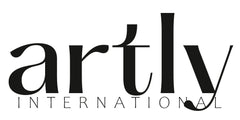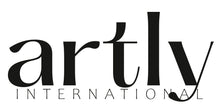Art Forgeries and the Lessons from Italy’s Latest Scandal
In a world where creativity and authenticity are highly valued, the art market remains surprisingly susceptible to deception. This reality came to light once again as authorities in Italy exposed a huge European network of art forgeries being sold as genuine masterpieces. Art forgeries are a long-standing issue in the art world, but new developments from Italy serve as a striking reminder that no collector, gallery, or enthusiast is entirely immune from risk. Here, we explore the world of art forgeries, how they’re discovered, and what buyers can do to ensure the art they purchase is as genuine as it appears.
Inside Europe’s Latest Art Forgery Bust
Forgeries captivate the public because they challenge our very perceptions of art and authenticity. It’s more than just financial deception—art forgeries manipulate history and rob artists of their legacy. In this recent case, a group of some 38 people were placed under investigation in Italy, Spain, France, and Belgium on suspicion of conspiracy to handle stolen goods, forgery, and illegal sale of artworks. This forgery network made and sold fake artworks attributed to some of the biggest names in modern and contemporary art including Banksy, Picasso, and Warhol as well as works attributed to major 19th- and 20th-century artists like Claude Monet, Vincent Van Gogh, Salvador Dali, Henry Moore, Marc Chagall, Francis Bacon, Paul Klee, and Piet Mondrian selling them to unsuspecting buyers at premium prices.
Investigators reported seizing over 2,100 alleged forgeries with an estimated market value of around 200 million euros ($215 million). They also uncovered six forgery workshops, two located in Tuscany, one in Venice, and the remaining spread across Europe. Experts from the Banksy archive who assisted with the investigation considered this latest operation as the biggest act of protection of Banksy's work. These works were not only sold on the private market, but were also sold at auction houses across Italy.
Forgeries like these don’t just disrupt the market; they reshape the narratives around famous works and even the reputations of the gatekeepers of the art industry as well as the artists involved.
How Are Forgeries Identified?
Identifying a forgery isn’t always straightforward. Art authentication has evolved into a highly technical process, drawing on the expertise of art historians, forensic scientists, and advanced technologies. Here are some of the main methods used to detect art forgeries:
-
Scientific Analysis: Techniques like carbon dating, X-ray fluorescence, and pigment analysis can reveal details inconsistent with an artwork’s claimed age or origin. This method is especially valuable for pieces attributed to Renaissance or Baroque periods, as certain pigments or materials may not have existed during those times.
-
Digital Imaging and AI: Recent advances in artificial intelligence and digital imaging allow experts to detect brushstrokes, textures, and micro-patterns unique to an artist. Deviations from an artist’s typical style or technique can raise red flags.
-
Expert Consultation: Trained eyes can sometimes detect inconsistencies that a machine may miss. A conservator or art historian, familiar with the artist’s nuances, can spot stylistic discrepancies or signs of artificial aging.
Why Forgeries Persist: Financial Incentives and Gaps in Due Diligence
The high prices commanded by certain artists and the ease of access to online marketplaces have made forgery more appealing than ever to unscrupulous sellers. Art forgers often target works by artists whose work has limited documentation, making authentication more challenging. Unfortunately, even experienced collectors can fall victim to forgeries if they bypass the due diligence that authenticating an artwork requires.
This underscores the importance of working with reputable galleries and experts who can provide transparency. Platforms like Artly International are committed to supporting buyers with trusted sources and professional oversight, offering peace of mind that each piece is as authentic as it is beautiful.
Tips for Buyers: Protecting Yourself in the Art Market
-
Research the Artwork’s Provenance: Provenance refers to the history of ownership and documentation for an artwork. Authentic pieces often come with detailed provenance that traces the work back to its origin, while forgeries tend to lack this historical footprint.
-
Consider Certification and Documentation: Seek documentation from reputable sources. If a piece claims to be from a well-known artist or period, ask for certification from recognized experts or institutions.
-
Be Skeptical of Bargains: If a deal seems too good to be true, it often is. Forgeries are frequently sold at discounted prices to attract buyers quickly and deter them from probing too deeply into the work’s history.
-
Purchase from Trusted Sources: Buying through a reputable platform or gallery ensures an added layer of credibility. Here at Artly International, we’re committed to offering a carefully vetted selection, providing buyers with both quality and security.
Building a More Transparent Art Market
At Artly International, we believe that every collector deserves to feel confident in their purchase. In light of the recent forgeries surfacing in Italy, we are reminded of the value of transparency and trust in the art world. That’s why our platform is designed to support not only artists and gallerists but also buyers, providing a curated space where authenticity and expertise in the art market is paramount.
By making information more accessible and emphasizing quality, we aim to help buyers navigate the art world with greater confidence. Whether you’re an experienced collector or new to the art scene, understanding the importance of authentication can make your journey more rewarding and, most importantly, more genuine.




Leave a comment